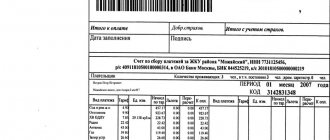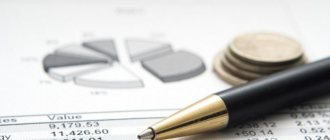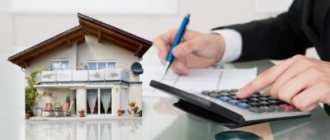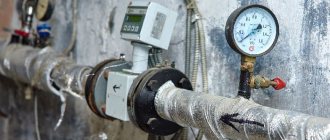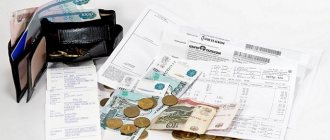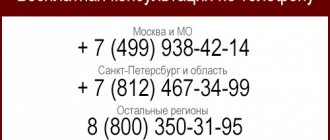Rules for water supply and sanitation: calculating the balance of water supply and consumption rates
It is believed that the average person consumes 200-250 liters of water per day. Then daily consumption for a family of 4 people will be 800-1000 liters, and monthly consumption will be 24,000-30,000 liters (24-30 cubic meters). In private houses in the courtyards there are swimming pools, outdoor showers, drip irrigation systems, i.e. part of the water consumption is irrevocably carried out onto the street.
We recommend reading: Social Card of a Pensioner in the Moscow Region Benefits
Both examples are conditional, but a table with a real calculation of water consumption and disposal, which can only be done by a qualified engineer, should be available to all economic entities (enterprises, housing stock) that collect water for drinking, sanitary and hygienic, industrial needs and discharge drains.
How to calculate water disposal for general house needs (GDN)
Apartment owners pay for a number of general building needs, which includes sewerage. If there is a KPU (collective metering device), calculations are performed only on it; this is done by employees of the housing and communal services or management company.
How the rules for calculating heating fees are changing from January 2019
Provided that the general house expense is not higher than the total individual expense for all residents, additional payment from residents is not required. If the volume of drains is higher than the total amount for individual consumption appliances, including the average for apartments without meters, the excess amounts will be distributed among residents. The distribution is carried out according to the area of the apartments.
In houses without a central heating system, residents do not pay for sewerage to the central heating station. In such houses, in accordance with Decree of the Russian Federation No. 334 of April 16, 2013, standards have not been established and residents do not yet pay for general house sewerage. In 2020, all standards will be prescribed (Resolution of the Government of the Russian Federation No. 1498 of December 26, 2016).
Balance of water consumption and wastewater disposal methods of calculation, purpose and objectives
Owners of autonomous houses, members of housing complexes and full owners of apartments who do not have meters and enter into a contractual relationship with a contractor will receive a completely different answer to the question of calculating drainage. The final value for payment in these cases will be considered to be the standards specified by local organizations, which were calculated on the basis of average statistical information on water consumption in a certain region. The established value is recalculated every year, updated and communicated to the public through local media.
Using average statistical standards for individual calculations of water consumption and disposal is not very beneficial for the consumer. The average limit includes a fairly large set of additional costs that must be allocated to the housing association, houses or group of users. Rarely do they all have the desire and desire to maintain communication and sewer systems in good technical condition. Those water losses that occurred as a result of accidents or repair work are also distributed among subscribers who do not have meters installed. This is why it is very beneficial to have personal counting equipment.
We recommend reading: Agreement for Rental Services for Residential Premises
Calculation of the volume of water disposal if the microdistrict is not equipped with a wastewater meter
Today, judicial practice on this issue is just beginning to take shape. Nevertheless, there are precedents that managers who will defend their rights can rely on.
Let us take as an example the Resolution of the Seventeenth Arbitration Court of Appeal dated April 25, 2014 in case No. A50-25260/2013. A dispute arose between the RSO and the HOA regarding the volume of sewerage services provided. RSO calculated this volume by adding the volumes of consumption of hot water supply and hot water supply according to the operating budget. The HOA determined it based on the readings of the IPU for hot water and cold water installed in citizens' apartments, as well as according to consumption standards - for apartments that do not have an IPU, and on the average monthly consumption of hot water and cold water - in the event of a malfunction of the meters or failure of citizens to provide IPU readings. The court agreed with the calculation of the HOA, justifying it as follows. Law N 416-FZ applies to relations related to wastewater disposal to the extent not regulated by other federal laws. The norms of another federal law - the Housing Code (clauses 1, 2 of Article 157) - take precedence over Law No. 416-FZ. The court rejected the RSO's reference to Letter of the Russian Ministry of Construction No. 5942-MS/04, noting that it did not contain clarifications on the application of specific provisions of the new Rules for the provision of utility services. The judges did not have any complaints regarding the data on water consumption volumes transmitted monthly by the RSO. The arbitrators noted that the presence of IPU in residential premises was confirmed by meter acceptance certificates (indicating the apartment number, meter numbers, inspection date, initial readings). To confirm the number of citizens living in apartments not equipped with an IPU, the HOA provided an extract from the house register and acts on the number of people living in the apartment.
Is it legal to charge one for sewerage in 2020?
The legal topic is very complex, but in this article we will try to answer the question “Is it legal to charge one for sewerage in 2020?” Of course, if you still have questions, you can consult with lawyers online for free directly on the website.
- Moscow region - apartment buildings with elevators - 0.61; apartment buildings without elevators - 2.88
- Leningrad region (St. Petersburg) - download
- Nizhny Novgorod region - download
- Sverdlovsk region - download
- Omsk region - download
- Tomsk region - download
- Novosibirsk region - download
- Lipetsk region - download
- Yaroslavl region - download
- Republic of Tatarstan, Kazan - download
- Republic of Adygea - download
- Krasnodar region - download
ODN is the monthly cost of maintaining the common property of the house, that is, stairs, elevators, corridors, technical rooms, attics, basements, roof, etc. This value may change. There are several factors that have a significant impact on its formation, such as time of year, region of the country, and also cannot exceed the indicators specified in regulations.
If the volume of ODN is negative
If we talk about old apartment buildings, then large losses can be associated with the wear and tear of the building itself and utility networks. Only additional costs can improve the situation, since existing payments cover only monthly needs. There is no extra money, so it was not possible to purchase, for example, control devices or modernize old ones.
According to the adopted amendments, the payment for the single-metering device will now still be charged according to the standards, however, if the house has communal metering devices, then periodically (most likely once a year) the payment for the single-metering device will be recalculated according to the readings of the communal metering devices (Part 9.2 of Art. 156 Housing Code of the Russian Federation).
Federal Law No. 258-FZ dated July 29, 2017 “On Amendments to Articles 154 and 156 of the Housing Code of the Russian Federation and Article 12 of the Federal Law “On Amendments to the Housing Code of the Russian Federation and Certain Legislative Acts of the Russian Federation” was adopted.
To come in
If you do not agree with this procedure for paying for one-way service, then at the general meeting of owners you can decide that payment for one-point service will be made either based on the average monthly consumption volume, adjusted once a year, or directly based on the actual readings of common household appliances accounting (part 9.2 of article 156 of the Housing Code of the Russian Federation).
- Readings from the common house meter are taken.
- Individual meter readings are taken.
- The difference in values is determined.
- The excess readings of the general building meter are divided by the number of apartments in proportion to the area of the premises.
- The resulting indicator is compared with the standard consumption of ODN.
- If the amount of one tax does not exceed the standard, then it is fully included in the payment for housing maintenance.
- When the calculated indicator turns out to be higher than expected, then residents pay ODN according to the approved standards, and the balance is paid by the management organization.
The explanation to the formula indicates that this value is calculated in accordance with PP 354.
Thus, despite the fact that PP 354 does not regulate the relationship between the RSO and the MA, Rule No. 124 (which regulates these relationships) establishes that the calculation in the case we are considering is carried out precisely in accordance with PP 354.
Standards for water disposal at one-way installation “4.
The funds received by the contractor from consumers to pay for utility services, which are subject to transfer in favor of resource supply organizations and the regional operator (hereinafter referred to as consumer payments), are transferred to these organizations in ways that are defined in the resource supply agreement, the agreement for the provision of services for the management of municipal solid waste and which do not contradict the legislation of the Russian Federation." 3.
: Will they be accepted into a garden in Moscow with temporary registrationforum
Accrual of one for sewerage 2020
Based on the above, the volume of wastewater discharged, subject to payment by the ICU in favor of the RSO, is equal to the volume of wastewater, subject to payment by consumers of such a service in favor of the ICU. That is, the calculation must be carried out precisely in accordance with Rules 354. Law 416-FZ is not applicable in this case.
This position is confirmed by “fresh” court decisions - for example, the Resolution of the Arbitration Court of the North-Western District dated July 31.
2017 in case No. A42-7455/2016 established: “By virtue of the direct indication of paragraph 13 of Rules No. 354, the terms of contracts for the acquisition of utility resources for the purpose of using such resources to provide utility services to consumers are determined taking into account the said Rules and other regulatory legal acts of the Russian Federation.
Why was the decision made to suspend these accruals in June? Since June, changes to the Rules for establishing and determining standards for the consumption of utility services and the Rules for the provision of utility services to citizens came into force, which did not allow for an unambiguous and clear interpretation of the procedure for calculating the amount of payment for sewerage.
Legality of accrual of one for wastewater disposal 2020
I live in Khakassia, in receipts for utility services, since November 1, a line for one sewerage system has appeared. In my apartment there are meters installed for cold water and separately for hot water. There is also a communal meter. Is it legal to charge one for sewerage if there is no separate meter for sewerage in my apartment and there is no communal meter for sewerage?
ODN water disposal
Since October of this year, the Lipetsk City Energy Company has resumed charging fees for single-use sewerage services. Why was such a decision made, and also what are the components of and how are the ODN for wastewater disposal calculated?
In a house equipped with metering devices, the actual consumption of resources becomes important. This is influenced by equipping premises with energy-saving light bulbs, motion sensors (this innovation is used in new houses), replacing electrical wiring in the entrance and timely repair of water and heating pipes - all these tasks must be performed by the management company.
Common house needs (CHN) are one of the expense items included in residents’ utility bills. This concept applies only to apartment buildings - in individual residential buildings there is no common housing. The ODN includes ensuring the functioning of household common areas (clause 1 of Article 36 of the Housing Code of the Russian Federation):
Is it possible to save money?
However, this letter was of an advisory nature and was not accepted by all regions for implementation. Therefore, in the summer, the authorities adopted the law dated July 29, 2017 N 258-FZ “On amendments to Articles 154 and 156 of the Housing Code of the Russian Federation...”, which officially approved provisions on the priority of metering indicators in the formation of payments for single-use income.
For non-payment or late payment of utility services, including sewerage, a penalty is charged. According to paragraph 14 of Art. 155 of the Housing Code of the Russian Federation, HOAs and Criminal Codes, the very next day after the delay, a penalty is automatically charged using software.
General house needs are an expense item that is included in the receipts of residents of all apartment buildings (MKD). The payment for public housing is a payment for a communal resource for the maintenance of common property: lighting of entrances, electrical costs for operating elevators, water used for cleaning entrances. This fee depends on the area of common areas, as well as the type and number of floors of the building.
Wastewater disposal at one water supply station in 2020: features of calculations and payment
These changes also affected the processing of payment documents. Previously, the category of general house needs was indicated as a separate line - utilities for maintaining the house.
In 2020, accruals for single payment appeared on receipts not as a single payment, which is not clear what is formed from, but broken down into components included in the overall bill.
For example: in the electricity column the payment for consumption in the apartment and for consumption in the house (in the elevator, entrance, etc.) is indicated. The water bill is distributed in the same way.
Source: https://baiksp.ru/test_category/zakonno-li-nachislenie-odn-za-vodootvedenie-v-2018g
Any industrial enterprise incurs a number of production and non-production costs. Of course, the owners are faced with the task of minimizing them in accessible ways. Among the costs of material resources, the cost of water stands apart: the enterprise always pays for it twice: both for the purchase (water consumption) and for the discharge (sewage).
At the end of the 19th and beginning of the 20th centuries, enterprises were built without taking into account environmental requirements - and there were no such concepts, and then they did not yet know that some resources were non-renewable. And during the period of industrialization in the 30-50s, pictures of smoky chimneys and giant workshops were a sign of a good life - just remember the films “The Shining Path” and “Spring on Zarechnaya Street”.
Russia is a very large and rich country, and we are not accustomed to taking care of the environment and, in particular, saving water - still the managers of some enterprises do not know reliably how much water is actually required for technology, and how much for household needs. They don’t know what the monthly payments are made up of – they pay “out of habit” and that’s all. And the water flows - sometimes completely uselessly - like Niagara Falls. But we also pay twice for this thoughtlessly spilled water.
Moreover, today there is a steady upward trend in tariffs for wastewater disposal, and not a single enterprise without a treatment facility section in the project can be built, reconstructed, or modernized.
If there is a shortage of fresh water, a good solution is to organize a recycling water supply. Its principle is that water used in technological processes goes to local treatment facilities, where it undergoes complete purification and disinfection, and is returned to the cycle. But this technique is justified only when there is a shortage of fresh water. And it’s not even that deep cleaning and disinfection are too expensive. Most often, we implement these technologies when discharging treated wastewater into reservoirs for fishing purposes or onto the terrain. And sometimes the cost of a cubic meter of water purified using our technology is cheaper than the fee for discharge into the city sewerage system.
But in the food industry there are wastewaters that are not just expensive to completely clean, but very expensive. This applies to brines (brine is a waste product from fisheries) and syrups. Salts and sugar form true solutions with water, and these substances can only be isolated by evaporation or separated on membranes using reverse osmosis. The operating costs of this technology are indeed very expensive: the process occurs at a pressure of 40-60 atmospheres, the wastewater purified on membranes must already be deeply pre-cleaned of suspended and organic substances. And one more important detail: with reverse osmosis, from 10 to 30% of a highly concentrated residue is formed, which also requires disposal.
But even if the water is completely purified and disinfected, there is a legal ban on the use of purified wastewater in food production.
How to calculate water supply
If technical measuring instruments are not installed by the client or they are faulty and do not have seals, then the amount of water consumed by consumers is determined according to the throughput of communication services structures. These points are specified in every agreement concluded between contractors and consumers.
For the convenience of consumers, a methodology for calculating water consumption and its disposal was developed, which included building standards. The balance calculation includes consumption standards that are regulated by technical requirements. Plus data on the equipment that is in operation for water communications, which are included in the technical passport.
